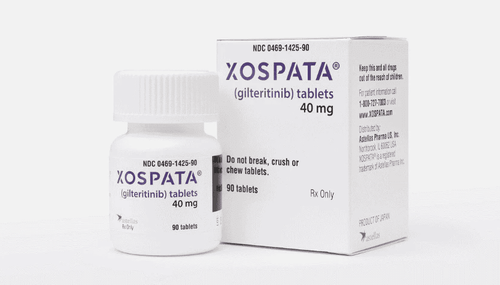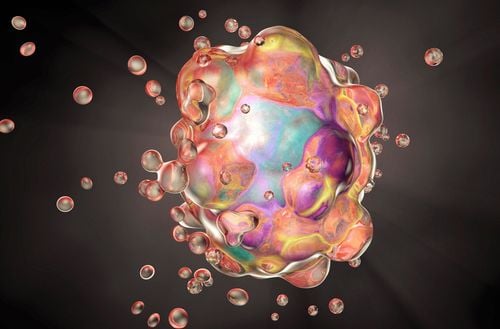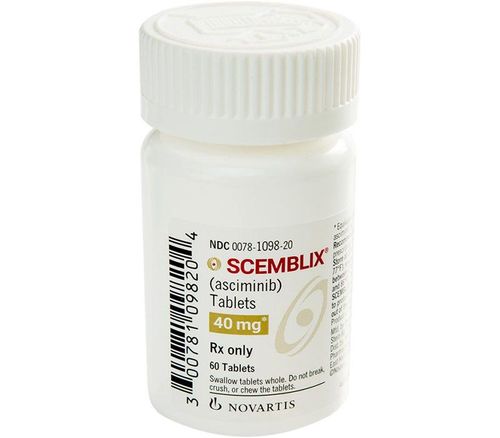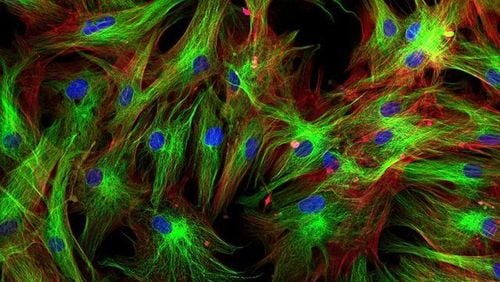This is an automatically translated article.
The development of Medicine has brought many treatments for cancer patients. One of them is the drug Calquence. So what is Calquene and what are the uses of Calquence?
1. Uses of the drug Calquence
Kinase is an enzyme that promotes cell growth. There are many enzyme kinases in the body that control each stage of cell growth. By blocking a specific enzyme, Calquence can slow the growth of cancer cells. Specifically, Calquence inhibits Bruton tyrosine kinase. Calquence is indicated for the treatment of chronic lymphocytic leukemia (CLL) in adults, which is a cancer of the white blood cells called B lymphocytes (or B cells).
2. How to take Calquence
Calquence is available as an oral capsule. Patients should swallow the tablet whole with water, before or after meals, do not break, open or chew the capsule. Contact pharmacist or doctor if patient is unable to swallow capsules for some reason. If you forget to take a dose of Calquence more than 3 hours after the usual time, skip the missed dose and take the next dose on schedule, do not take more medicine to make up for the missed dose.
It is important for patients to remember that they are taking the correct amount of Calquence each time. Calquence blood levels can be affected by certain foods and medications, so things like grapefruit, grapefruit juice, Seville oranges, Itraconazole, Erythromycin, Fluconazole, Rifampin, and Diltiazem should be avoided. Patients need to make sure their doctor knows about all medications and supplements they are taking.
Medicines for stomach problems can affect the way Calquence is absorbed. Patients should not take proton pump inhibitors such as Omeprazole and Pantoprazole. Calquence should also be taken at least 2 hours before taking any H2 blockers. Also, don't take any antacids within 2 hours before or after taking Calquence.
Calquence can cause severe bleeding in some cases. Talk to your doctor if you are taking anticoagulants, which can lead to serious bleeding.
3. How should Calquence be stored?
Store Calquence in its original, labeled packaging at room temperature and in a dry place (unless otherwise directed by your doctor or pharmacist). Calquence is not suitable for storage in an airtight container and should be kept out of reach of children and pets.
If caregivers are preparing a dose for a patient, they should consider wearing gloves or pouring medication directly from the container into a lid, small cup, or directly into the patient's hand. The key is to avoid touching Calquence tablets with your hands, so it is important to wash your hands before and after administering Calquence to a patient.
4. Calquence drug side effects
Some common side effects of the drug Calquence :
4.1. Decrease in the number of red blood cells causing anemia Red blood cells are responsible for transporting oxygen to the organs in the body. When the red blood cell count is low, the patient may feel tired, weak, short of breath, or have chest pain. Severe anemia may require a blood transfusion.
4.2. Decreased Platelet Count Platelets play an important role in blood clotting, so a low platelet count increases the risk of bleeding. Tell your doctor if you have any bruising or excessive bleeding, including nosebleeds, bleeding teeth, or bloody urine. If the platelet count becomes too low due to taking Calquence, the patient may receive a platelet transfusion.
4.3. Headaches Your doctor may recommend medications and other strategies to help relieve headaches during treatment with Calquence .
4.4. Increased risk of infection and decreased white blood cell count Calquence may lead to life-threatening infections, with or without a decreased white blood cell count.
White blood cells are important to help the body fight infections. During treatment with Calquence, a person with a severely low white blood cell count is more likely to develop an infection. Patients should notify their doctor or nurse immediately if they have a high fever, sore throat or cold, difficulty breathing, cough, burning when urinating, or pain that does not heal.
4.5. Diarrhea Patients should notify the oncologist if the number of bowel movements in a day is 6 or more times. Talk to your doctor about using over-the-counter medications to control diarrhea.
In addition, the diet of Calquence users should limit foods high in fiber, pale taste, avoid fresh fruits, green vegetables, whole grain breads, cereals and seeds. Soluble fiber found in certain foods has the ability to absorb fluids, which can help relieve diarrhea. Foods high in soluble fiber include: apple sauce, bananas (ripe), canned fruit, oranges, boiled potatoes, white rice, white flour products, oatmeal, cream of wheat and French fries.
4.6. Fatigue Fatigue is a very common symptom during cancer treatment with Calquence and most cases of fatigue will not improve with rest. During cancer treatment and for some time afterward, patients may need to adjust their daily routine to manage the condition. Also, schedule time to rest during the day and save energy for more important activities.
4.7. Muscle or joint pain Your doctor may recommend medications and other strategies to help relieve pain.
4.8. Less common side effects of Calquence Bruising/bleeding/Hemorrhage: In some cases, Calquence can cause bleeding or serious bleeding. If the patient has nosebleeds, bleeding during bowel movements, dark or black stools, blood in the vomit or coughs up blood, blood in the urine, suddenly becomes confused or difficult to speak, or has a severe headache ... quickly contact the doctor. Patients should consult their doctor about stopping the drug 3-7 days before and after surgery.
Heart problems: In rare cases, Calquence can cause an abnormal heart rhythm called atrial fibrillation or flutter. Contact the doctor if the patient feels rapid heartbeat, lightheadedness, dizziness, shortness of breath, or chest discomfort.
Secondary malignancies:: Risk of developing skin cancer or another type of cancer from treatment with Calquence, which can occur many years after treatment. This often involves repeated treatments or high doses, and your doctor will provide instructions on how best to monitor them, so the patient can be closely monitored during Calquence treatment. .
Reproductive concerns:
Exposure of the fetus to Calquence may cause birth defects, so patients should not become pregnant or father a child while taking Calquence. An effective birth control plan is essential during treatment and for at least 1 week after stopping Calquence; Patients should not breast-feed while taking Calquence and for 2 weeks after the last dose. Calquence is indicated for the treatment of chronic lymphocytic leukemia (CLL) in adults, which is a cancer of the white blood cells called B lymphocytes (or B cells). To ensure the effectiveness of treatment and avoid unwanted side effects, patients need to strictly follow the instructions of the doctor, professional pharmacist.
Follow Vinmec International General Hospital website to get more health, nutrition and beauty information to protect the health of yourself and your loved ones in your family.
Please dial HOTLINE for more information or register for an appointment HERE. Download MyVinmec app to make appointments faster and to manage your bookings easily.
Reference source: oncolink.org













